What Are The Different Types Of Microscopes ?
There are several different types of microscopes, including optical microscopes, electron microscopes, and scanning probe microscopes. Optical microscopes use visible light to magnify and observe samples. They can be further classified into compound microscopes, which use multiple lenses to magnify the image, and stereo microscopes, which provide a three-dimensional view of the sample. Electron microscopes, on the other hand, use a beam of electrons to create an image with much higher magnification and resolution than optical microscopes. There are two main types of electron microscopes: transmission electron microscopes (TEM) and scanning electron microscopes (SEM). TEMs transmit electrons through the sample to create an image, while SEMs scan the surface of the sample with a focused beam of electrons. Lastly, scanning probe microscopes use a physical probe to scan the surface of a sample and create an image. This category includes atomic force microscopes (AFM) and scanning tunneling microscopes (STM).
1、 Optical Microscopes
Optical microscopes are one of the most commonly used types of microscopes in scientific research, education, and various industries. They use visible light and a series of lenses to magnify and observe small objects or specimens. There are several different types of optical microscopes, each with its own unique features and applications.
1. Compound Microscopes: These are the most basic and widely used optical microscopes. They consist of two or more lenses that work together to magnify the specimen. Compound microscopes can achieve magnifications of up to 2000x and are commonly used in biology, medicine, and material science.
2. Stereo Microscopes: Also known as dissecting microscopes, stereo microscopes provide a three-dimensional view of the specimen. They have two separate optical paths for each eye, allowing for a more detailed examination of larger objects. Stereo microscopes are commonly used in fields such as forensic science, electronics, and entomology.
3. Digital Microscopes: These microscopes use digital cameras to capture images of the specimen, which can be viewed on a computer screen or other digital devices. They offer the advantage of easy image capture, storage, and sharing. Digital microscopes are commonly used in fields such as quality control, education, and research.
4. Fluorescence Microscopes: These microscopes use fluorescent dyes or labels to visualize specific structures or molecules within a specimen. They are widely used in cell biology, immunology, and genetics research. Fluorescence microscopes can provide high-resolution images and allow for the study of dynamic processes within living cells.
5. Confocal Microscopes: Confocal microscopes use a laser beam to scan the specimen point by point, creating a three-dimensional image. They provide excellent optical sectioning and are commonly used in biomedical research, neuroscience, and materials science.
6. Super-resolution Microscopes: These microscopes use advanced techniques to overcome the diffraction limit of light, allowing for higher resolution imaging. Examples include stimulated emission depletion (STED) microscopy and structured illumination microscopy (SIM). Super-resolution microscopes have revolutionized the field of nanoscale imaging and are used in various biological and materials science applications.
It is worth noting that with advancements in technology, optical microscopes have seen significant improvements in terms of resolution, imaging speed, and automation. These advancements have led to the development of more sophisticated and specialized optical microscopes, enabling researchers to explore the microscopic world with greater precision and detail.
2、 Electron Microscopes
Electron microscopes are a type of microscope that use a beam of electrons instead of light to magnify and visualize objects at a much higher resolution. They are widely used in various scientific fields, including biology, materials science, and nanotechnology. There are two main types of electron microscopes: transmission electron microscopes (TEM) and scanning electron microscopes (SEM).
Transmission electron microscopes (TEM) work by passing a beam of electrons through a thin specimen. The electrons interact with the specimen, and the resulting image is formed by detecting the transmitted electrons. TEMs can achieve extremely high magnifications, allowing scientists to observe the fine details of cells, viruses, and even individual atoms. They are particularly useful for studying the internal structure of specimens.
Scanning electron microscopes (SEM) work by scanning a focused beam of electrons across the surface of a specimen. The electrons interact with the specimen, and the resulting image is formed by detecting the secondary electrons emitted from the surface. SEMs provide detailed three-dimensional images of the surface topography of specimens, allowing scientists to study the shape, size, and texture of objects.
In recent years, advancements in electron microscopy have led to the development of new techniques and technologies. For example, cryo-electron microscopy (cryo-EM) has revolutionized the field of structural biology by allowing scientists to visualize biological molecules in their native state. This technique involves freezing the specimen in a thin layer of ice and imaging it at extremely low temperatures. Cryo-EM has provided unprecedented insights into the structure and function of proteins and other biomolecules.
Furthermore, the development of aberration-corrected electron microscopy has significantly improved the resolution and image quality of electron microscopes. By correcting for aberrations in the electron beam, scientists can achieve higher spatial resolution and better image contrast, enabling them to observe even smaller details in specimens.
In conclusion, electron microscopes, including transmission electron microscopes and scanning electron microscopes, are powerful tools for visualizing objects at high resolution. Recent advancements in electron microscopy, such as cryo-EM and aberration correction, have further expanded the capabilities of these instruments, allowing scientists to explore the microscopic world with unprecedented detail and clarity.
3、 Scanning Probe Microscopes
Scanning Probe Microscopes (SPMs) are a type of microscope that allow scientists to observe and manipulate materials at the nanoscale level. They use a physical probe to scan the surface of a sample, providing detailed information about its topography, electrical properties, and even chemical composition. There are several different types of SPMs, each with its own unique capabilities and applications.
1. Atomic Force Microscope (AFM): AFM is one of the most widely used SPM techniques. It uses a small cantilever with a sharp tip to scan the surface of a sample. By measuring the deflection of the cantilever, it can create a high-resolution topographic image of the sample.
2. Scanning Tunneling Microscope (STM): STM is another commonly used SPM technique. It operates by passing a fine metal tip very close to the surface of a conductive sample. By measuring the tunneling current between the tip and the sample, it can create an image of the sample's surface with atomic resolution.
3. Magnetic Force Microscope (MFM): MFM is an SPM technique that measures the magnetic properties of a sample. It uses a magnetic probe to scan the surface and detect variations in the magnetic field, providing information about the sample's magnetic domains and magnetic properties.
4. Electrochemical Scanning Probe Microscopy (EC-SPM): EC-SPM combines SPM techniques with electrochemical measurements. It allows scientists to study electrochemical processes at the nanoscale, providing insights into corrosion, battery materials, and other electrochemical phenomena.
5. Kelvin Probe Force Microscope (KPFM): KPFM is an SPM technique that measures the surface potential of a sample. It can provide information about the electrical properties and charge distribution on the surface, making it useful for studying semiconductors, thin films, and other electronic materials.
The field of SPM is constantly evolving, with new techniques and advancements being developed. For example, recent developments in SPM include the combination of SPM with other imaging techniques such as optical microscopy or spectroscopy, enabling researchers to obtain more comprehensive information about the sample. Additionally, advancements in probe technology, such as the development of sharper and more sensitive probes, have improved the resolution and sensitivity of SPM techniques. These advancements continue to expand the capabilities of SPMs and open up new possibilities for nanoscale research and applications.
4、 Confocal Microscopes
Confocal microscopes are a type of advanced optical microscope that offer high-resolution imaging capabilities. They are widely used in various scientific fields, including biology, medicine, materials science, and nanotechnology.
The main principle behind confocal microscopy is the use of a pinhole aperture to eliminate out-of-focus light, resulting in improved image quality and increased optical sectioning. This technique allows researchers to obtain sharp, three-dimensional images of specimens with exceptional clarity and detail.
There are several different types of confocal microscopes available, each with its own unique features and advantages. One common type is the laser scanning confocal microscope (LSCM), which uses a laser beam to scan the specimen point by point. This allows for precise control over the excitation and detection of fluorescence, making LSCMs particularly useful for studying live cells and dynamic processes.
Another type is the spinning disk confocal microscope, which utilizes a spinning disk with multiple pinholes to rapidly scan the specimen. This enables high-speed imaging, making it suitable for capturing fast biological events such as cellular dynamics and intracellular signaling.
Recently, there have been advancements in confocal microscopy, such as the development of super-resolution techniques. These techniques, such as stimulated emission depletion (STED) microscopy and structured illumination microscopy (SIM), push the limits of resolution beyond the diffraction limit of light. They allow researchers to visualize structures and processes at the nanoscale level, providing valuable insights into cellular and molecular mechanisms.
In conclusion, confocal microscopes, including laser scanning and spinning disk confocal microscopes, are powerful tools for high-resolution imaging. With the recent advancements in super-resolution techniques, confocal microscopy continues to evolve and contribute to our understanding of the microscopic world.

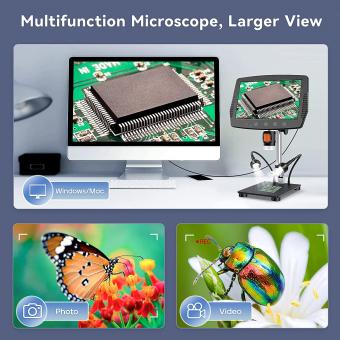







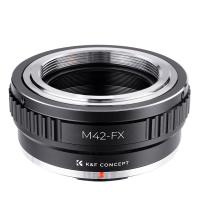

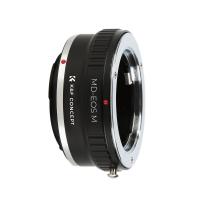










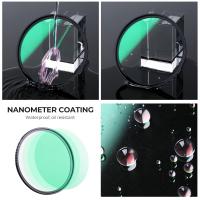

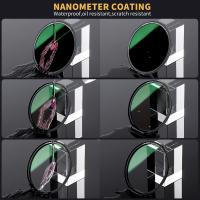



There are no comments for this blog.